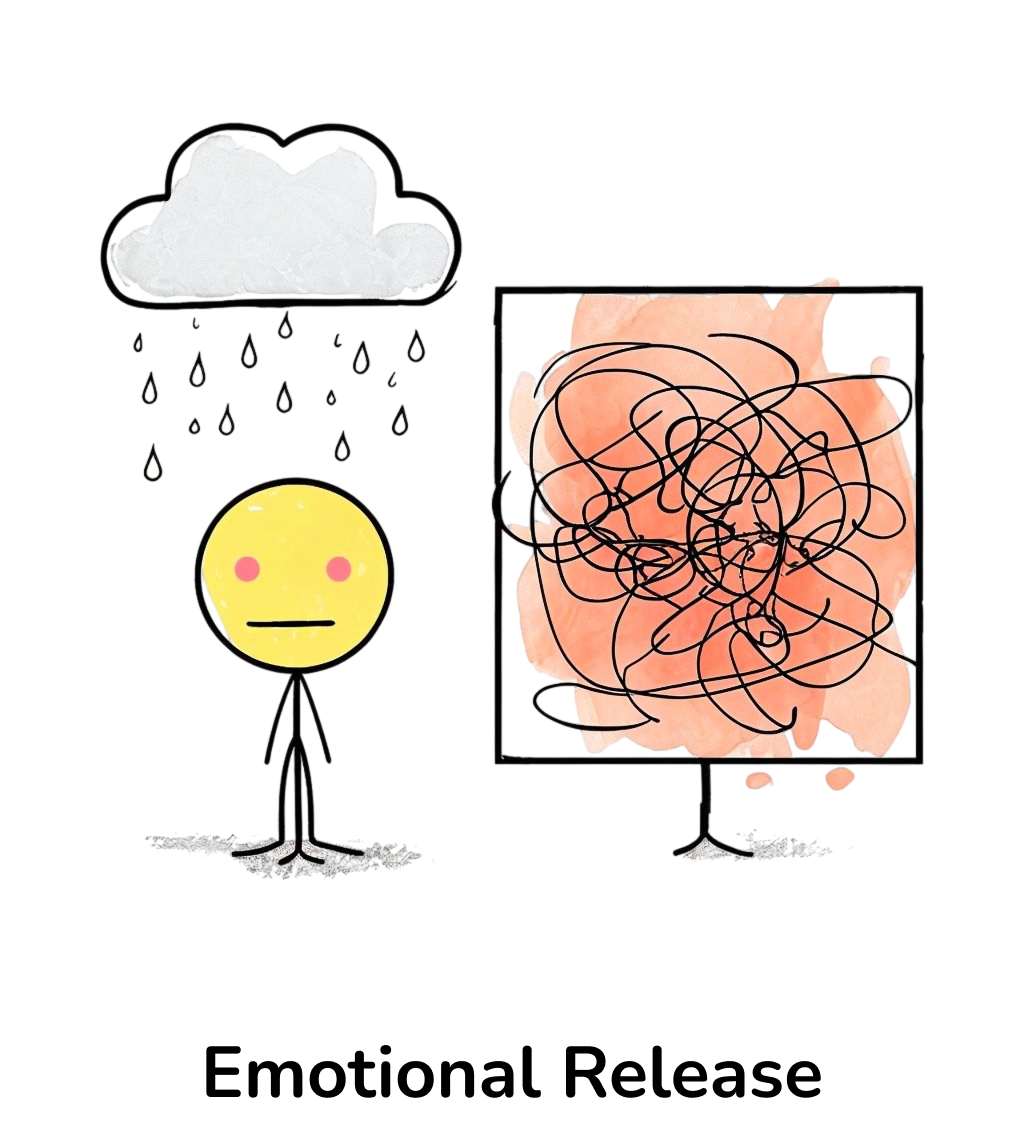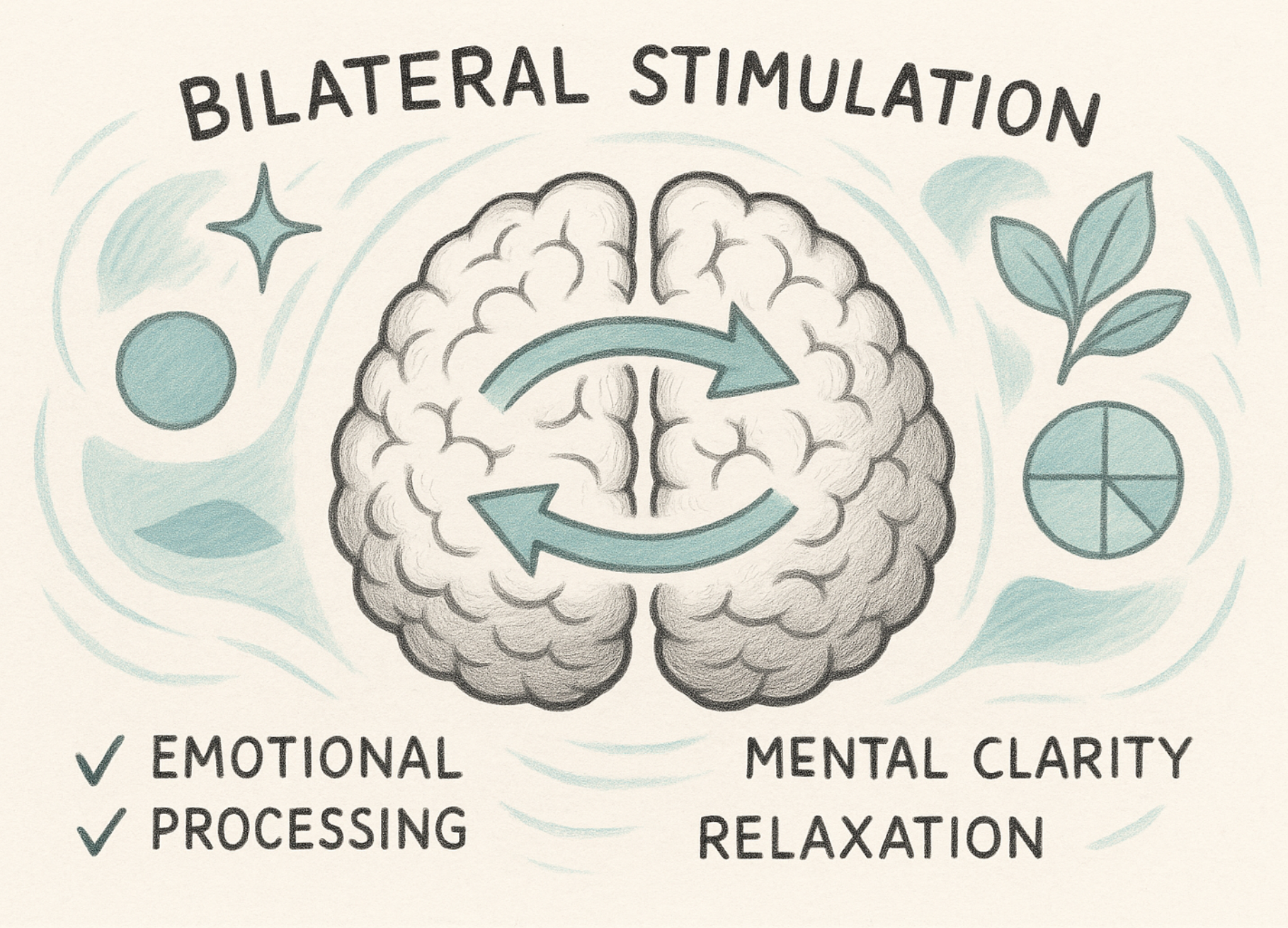
Art therapy and journaling are both powerful tools for emotional expression and self-exploration. They provide a safe, creative space where participants can process and release emotions that may be difficult to express verbally.
Art Therapy:
Non-Verbal Expression:
- Art allows participants to express emotions without needing to find the “right” words. Sometimes, emotions are too complex or overwhelming to articulate, and art provides a visual outlet to convey what can’t be said.
- Colors, shapes, and symbols used in artwork can represent feelings in a way words might not capture.
Safe Exploration of Emotions:
- Creating art gives people a chance to explore painful or hidden feelings at their own pace. The act of making art can help them confront emotions that might feel too intense or frightening.
- Art therapy sessions with a trained therapist can offer a structured environment, guiding individuals to process these emotions safely.
Release Through Creation:
- Engaging in creative work can help release built-up tension. The act of creating something, whether it’s through painting, drawing, or sculpting, can be a cathartic process that lets go of stress, anger, or sadness.
- As participants engage with their artwork, they often begin to understand and release emotions they were previously unaware of or unable to express.
Symbolism and Reflection:
- In art therapy, symbols often emerge that represent deep emotions. For example, a chaotic pattern may symbolize inner turmoil, while calm, flowing lines may indicate peace or resolution. Reflecting on the art afterward can bring deeper understanding and release.
Journaling:
Self-Reflection and Emotional Processing:
- Journaling encourages participants to write freely about their thoughts, which helps process emotions by putting them into words. This process of writing out what’s going on inside can create emotional clarity and release.
- Writing about events or emotions can reduce their intensity, helping participants distance themselves from overwhelming feelings and gain insight into how to handle them.
Release of Stress and Anxiety:
- When participants write about their worries, fears, or stressors, it helps to release them from the mind and onto the paper. This can feel like a mental “cleanse,” reducing anxiety and creating a sense of relief.
- Journaling has been linked to a reduction in stress levels by helping participants manage their thoughts more effectively.
Stream of Consciousness:
- Writing without restrictions or censorship, sometimes referred to as “stream of consciousness” journaling, allows for emotions to flow freely. Participants can release pent-up feelings and get a deeper sense of what’s causing their emotional states.
Tracking Emotional Growth:
- Journaling over time allows individuals to reflect on how their emotions evolve. They can see patterns in their feelings, gain perspective on their personal growth, and notice how their emotional responses change, which can be a healing process in itself.
Combined Effect of Art Therapy and Journaling:
When combined, art therapy and journaling can amplify the emotional release. For example:
- A participant might first create a piece of art expressing their feelings and then journal about the experience. This combination gives them both a visual and verbal way to explore their emotions more fully.
- Art provides an initial emotional release, and journaling gives space for deeper reflection on the meaning behind the artwork, helping participants process and move through difficult emotions.




Leave a Reply